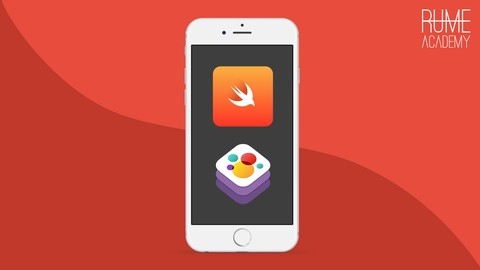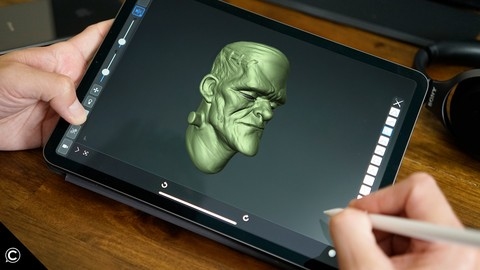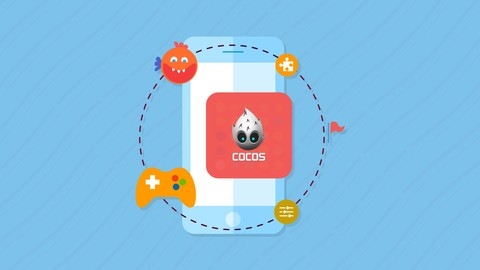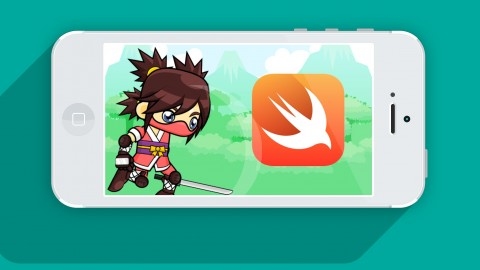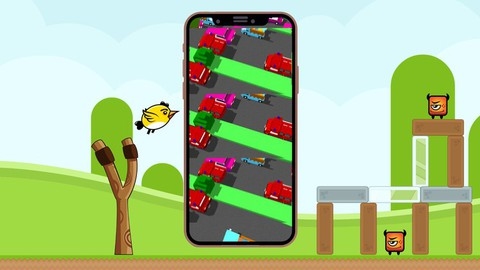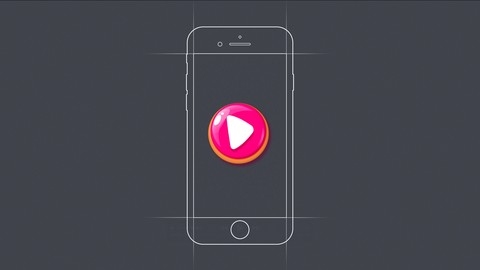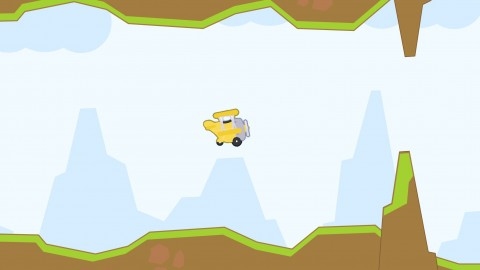iOS game development is a thrilling field that allows you to bring your creative ideas to life, captivating audiences with engaging and interactive experiences.
Learning to develop iOS games opens doors to a rewarding career or enables you to pursue your passion for game design.
But finding a good iOS game development course on Udemy can be a daunting task, especially with the sheer number of options available.
You’re looking for a program that covers essential concepts, provides hands-on projects, and is taught by experts, all while fitting your learning style and goals.
Fear not, we’ve got you covered!
After meticulously reviewing numerous courses, we’ve determined that Introduction to iOS Game Development with SpriteKit & Swift is the best overall course on Udemy.
This comprehensive program will guide you through building a complete game called “Super Indie Run” using Apple’s SpriteKit framework and Swift.
You’ll start with a crash course on SpriteKit fundamentals, then dive into creating the game itself, learning to implement features like player movement, jumping mechanics, obstacles, enemies, and more.
The course’s hands-on approach ensures you’ll gain a deep understanding of iOS game development concepts.
While this course is our top pick, there are other great options available on Udemy for different learning styles and goals.
Whether you’re a complete beginner or have some experience, whether you’re interested in 2D or 3D game development, or whether you’re seeking specific knowledge in SpriteKit or Cocos2D, we’ve got you covered.
Keep reading to discover a comprehensive list of our top recommendations and find the perfect iOS game development course for you.
Introduction to iOS Game Development with SpriteKit & Swift
This course takes you on a comprehensive journey through building a complete game called “Super Indie Run” using Apple’s SpriteKit framework and Swift programming language.
You start with a crash course on SpriteKit, covering fundamental concepts like SKNode, SKScene, SKSpriteNode, SKActions, SKPhysics, asset catalogs, tile maps, and the update loop.
This lays a solid foundation for game development basics.
The real fun begins when you dive into building the actual “Super Indie Run” game.
You’ll set up the project, create tile maps, add layers like background and world, implement game states, and create classes for the player, ground physics, animations, and more.
Step-by-step, you’ll integrate features like player movement, jumping mechanics, obstacles, enemies, collectible coins, particle effects, and a heads-up display (HUD).
The course also covers advanced topics like scoring systems, popups, menus, level selection, powerups, multiple worlds with different themes, audio integration, and even creating app icons and launch images.
You’ll learn how to handle delegation between scenes and complete the entire game development lifecycle.
What makes this course truly engaging is the hands-on approach.
You’ll be coding along and implementing everything from scratch, giving you a deep understanding of the concepts and techniques involved in iOS game development with SpriteKit and Swift.
iOS iPad Game Development 3D Character Sculpting & Modeling
This course provides a comprehensive introduction to Forger iOS, a powerful sculpting app for the iPad.
You’ll start with an overview of the project and the Forger iOS interface.
The course walks you through navigating the viewport, understanding the user interface, and getting familiar with the startup menu.
From there, you’ll dive into the foundational tools within Forger iOS, such as the standard brush, clay brush, move brush, scrape brush, and inflate brush.
You’ll learn best practices for each tool and how to effectively mask the clay.
The course also covers the various menus in Forger iOS, including file management, tool adjustments, mesh operations like subdividing and remeshing, working with layers, adding objects like cameras and lights, creating and adjusting materials, using image references, rendering your sculpt, and customizing preferences.
To reinforce your learning, the course includes a timelapse video demonstrating the sculpting process for a final character model.
Additionally, you’ll receive a bonus offer for a 20% discount on all courses from Class Creatives, the creators of this course.
This includes access to their “Superhero Anatomy Character Sculpting” course, which can further enhance your character modeling skills.
SpriteKit Introduction - iOS Game Development with Swift 3
The course provides a comprehensive introduction to game development with SpriteKit and Swift.
You’ll start by understanding the fundamentals of SpriteKit, including its structure, rendering order, positioning, and the SKNode class.
This lays the groundwork for building games effectively.
Next, you’ll dive into physics simulations in SpriteKit, a crucial aspect of creating engaging games.
You’ll learn about different physics bodies, the distinction between collisions and contacts, and how to create custom contacts to define interactions.
The course then guides you through building a space shooter game from scratch.
You’ll create a main menu, transition to the game scene, add background images and animations, implement player movement and shooting mechanics, and populate the game with asteroids and enemy ships.
As you progress, you’ll enhance the game with features like background music, sound effects, scoring, and lives for the player’s ship.
You’ll also explore physics bodies, enabling realistic interactions between game objects.
The course covers advanced topics like contact handling, explosions when enemies are hit, a game over scene, and implementing a shield for the player’s ship.
You’ll learn to display shield lives, add physics to the shield for enemy interactions, and even allow the player to shoot twice when the shield is lost.
Throughout the course, you’ll gain hands-on experience with SpriteKit’s classes and methods, such as SKAction for animations, SKLabelNode for displaying scores, and SKShapeNode for creating shapes like the shield.
The lectures provide step-by-step guidance, ensuring you understand each concept before moving on to the next.
Develop an iOS game with Cocos 2D Game Development Framework
The course starts by guiding you through installing Cocos2D on your Mac and introducing the framework’s core concepts.
You’ll learn how to create a new Cocos2D application, add scenes and layers, work with sprites and images, and implement scene transitions.
The course then dives into more advanced topics like using menus and menu items, handling touch events, and working with sprite properties like positioning, scaling, and flipping.
You’ll also learn about adding sound effects and implementing sprite sheet animations and actions.
But the real value comes from the two game projects you’ll build from scratch.
First, you’ll develop an “Aim and Shoot” game, covering techniques like bezier curve animations, collision detection, projectile path identification, scoring systems, and memory management.
The second project is a memory game where you’ll learn to randomly arrange image pairs, implement touch actions, add scoring and timing systems, and create a game over scenario.
Throughout the projects, you’ll gain hands-on experience with core Cocos2D concepts like scheduling/unscheduling methods, sequencing actions, and effective memory management.
The course even includes a bonus surprise for you!
iOS / OSX Game Development - From Start to Store in Swift
You will start by learning the fundamentals of SpriteKit, including nodes, sprites, labels, particle effects, actions, physics, and game loops.
The course covers essential concepts like handling user input, implementing game architecture for scalability, and utilizing advanced techniques like normal mapping and lighting effects with SKLightNode.
As you progress, you’ll go through the entire 10-step game development workflow, from designing your game concept and prototyping to sourcing assets, creating graphics, and building the game engine.
You’ll learn to use tools like Adobe Flash and Adobe Illustrator to create game artwork and integrate it seamlessly into your Swift project.
The course provides a comprehensive guide to building a complete game using GameplayKit, an Apple framework that simplifies the development of game-specific features.
You’ll create a tile-based game with a main menu, character selection, level selection, and post-game screens.
Additionally, you’ll implement physics, collision detection, camera constraints, pause functionality, and integrate sounds and music.
Once your game is ready, the course walks you through the process of setting up Apple Developer Accounts, creating bundle IDs, using iTunes Connect, and submitting your app to the App Store.
You’ll also learn pre-marketing strategies to promote your game before its release.
Throughout the course, you’ll have access to course files, templates, and resources to follow along and build your game.
The instructor also addresses migration from Swift 1.0 to 2.0, ensuring you stay up-to-date with the latest language updates.
Angry Birds, Crossy Road & more: Game Development in Swift 4
You’ll start by learning how to create simple games using just the UIKit framework, without needing any specialized game engines.
The Simon Says game project will teach you the basics of creating an interactive app with buttons and animations.
From there, you’ll dive into the SpriteKit framework, Apple’s 2D game engine.
A crash course will introduce you to core SpriteKit concepts like nodes, sprites, actions, physics, and more.
You’ll then apply this knowledge to build games like Color Switch, where you’ll implement physics, scoring, menus, and data persistence.
The course culminates in an extensive Angry Birds clone project, covering everything from tile maps and camera controls to bird trajectories, block destruction, enemy behaviors, and level data.
Along the way, you’ll learn advanced techniques like pinch-to-zoom, constraints, and animation.
But 2D isn’t the only focus - you’ll also explore 3D game development with SceneKit.
Starting with the basics of 3D scenes, physics, and forces, you’ll create a game called Crazy Road.
This will involve building lanes, adding vehicles with driving animations, implementing collisions and physics bodies, and creating a head-up display.
To top it off, the course covers app store optimization strategies for icons, keywords, screenshots, and localization.
You’ll even learn how to create your own 3D art using the voxel editor MagicaVoxel.
Finally, you’ll go through the full process of submitting your game to the App Store.
How to Create iOS 2D Games with SpriteKit and Swift
You’ll start by learning what SpriteKit is and how to set up a SpriteKit game project.
From there, you’ll dive into the basics of SpriteKit, adding a player sprite, detecting touches, and animating the player.
The course covers using particle emitters to create visual effects like a pulsing player animation.
You’ll learn how to create and spawn enemies with random parameters, move them across the screen, and remove them when they go off-screen.
An important topic is collision detection using SKPhysicsBody and bitmasks.
You’ll see how to detect collisions between the player and enemies, and take appropriate actions like ending the game or awarding points.
To refine the gameplay, you’ll add velocity for the player, define what happens after collisions, and incorporate sound effects.
The course also guides you through creating a heads-up display (HUD) to show the game timer and score, as well as implementing power-ups that the player can collect.
Multiple scenes are covered, including a start scene, game over scene, and an infinite scrolling background.
You’ll learn how to handle game data using the Singleton design pattern.
Throughout the course, you’ll be working on a complete game project, applying the concepts as you go.
By the end, you’ll have a polished 2D game ready to be published to the App Store.
Dive Into SpriteKit - You Design the Game
The course offers a hands-on approach to learning iOS game development with SwiftUI and Swift.
You’ll build several games from scratch, each with multiple variations to choose from.
Project 1 has you creating a game where the player avoids obstacles.
Options include racing on roads, flying through space, or sailing through the sea.
You’ll learn to draw backgrounds, create the player character, implement movement controls, add obstacles and collision detection, manage scoring, and incorporate audio.
In Project 2, you’ll develop a puzzle game with grids of animals, lights, or numbered balls.
Players must identify the odd one out.
You’ll create levels, handle correct/incorrect selections, keep score, and implement sound effects and endings.
Project 3 is a Flappy Bird-style game with a plane, submarine, or balloon avoiding obstacles.
You’ll draw parallax backgrounds, add particle effects, manage scoring and collisions, and incorporate audio.
Project 4 involves matching games with shapes, balloons, or aliens arranged in grids.
You’ll give players power-ups, keep score, penalize incorrect moves, and create conditions to end the game.
The course culminates with an integration to the “Hacking with Swift” platform for further learning opportunities.
You’ll gain experience with core game development concepts while customizing each project to your preferences.
DIY iOS Games: A Developer Guide - Anti Candy Crunch
This course guides you through the process of creating your own iOS game by reskinning an existing game called “Anti Candy Crunch”.
You will learn how to update the game for iOS 12, set up various services like Facebook, Firebase, AdMob, and Chartboost, and ultimately submit your reskinned game to the App Store.
The course starts by introducing you to the project and the game “Anti Candy Crunch”, which you will be reskinning.
You will learn how to download and install Xcode, the primary tool for iOS development, and get familiar with Cocoapods, a dependency manager used in the project.
Next, you will dive into setting up your reskinned version, called “Anti Cookie Crunch”.
This involves localizing the app, setting up Facebook integration, Firebase for user data storage, in-app purchases, and Game Center leaderboards.
You will also learn how to configure AdMob and Chartboost for displaying advertisements within the game.
A crucial step in reskinning the game is changing the images, sounds, and fonts to make your version unique and avoid rejection from the App Store.
The course guides you through this process, ensuring you understand the importance of differentiating your app from the original.
Once you have completed the reskinning process, the course walks you through submitting your app to the App Store.
You will learn how to archive your project, set up your app in iTunes Connect, and finally submit it for review by Apple.
Throughout the course, you have access to the source code for “Anti Candy Crunch” and can ask questions or seek support if you encounter any issues.
The course also includes a bonus section that covers the final steps after your app is approved and ready for sale on the App Store.
The Complete iOS Game Course - Build a Flappy Bird Clone
This course starts with the basics of SpriteKit concepts like nodes, actions, physics bodies, and collision detection.
The first major project is building a Space Cannon shooter game, which introduces game mechanics like shooting projectiles, collision handling, particle effects, menus, and saving data.
The next project is Tappy Plane, a Flappy Bird-style game.
It covers animations, scrolling backgrounds, obstacles, particle trails, physics, controls, menus, sounds, and bitmap fonts.
There are also challenges to add weather effects, buttons, and other enhancements.
After Tappy Plane, the syllabus moves on to Alien Runner, a gravity runner platformer game.
It utilizes the Tiled map editor to design levels, JSTileMap library to load the maps, player movement and physics, collisions, changing scenes, level selection, parallax scrolling, and customizing player controls.
The syllabus is very comprehensive, gradually building up complexity from basic concepts to full-fledged games with menus, levels, physics, and visual effects.
It makes use of several third-party libraries like SoundManager and JSTileMap.
The projects cover a wide range of game genres and mechanics like shooters, endless runners, and platformers.
The syllabus does a great job of explaining the code and walking through implementation details.
It uses visual examples extensively to clarify concepts.
There are also regular coding challenges to reinforce learning.
